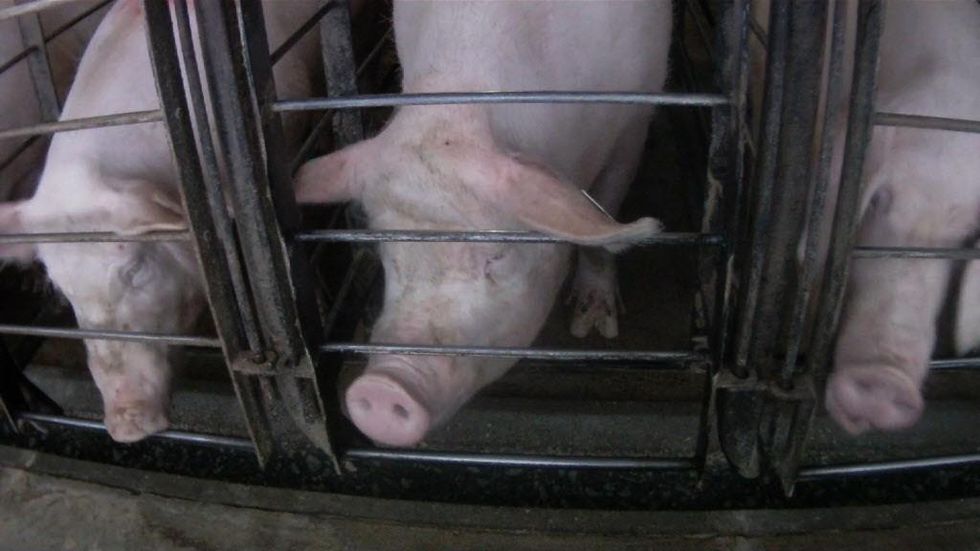In a
new commentary, a blogger for the meat industry Janeal Yancey asks, "What if I told you that twice a day, I tie my four-year-old to a chair and leave her there for an hour? No matter how she pleads or cries or protests, she has to be tied down."
She's referring here to car seats, explaining they're a necessary safety precaution. Therefore, she concludes, since pigs can sometimes be aggressive with each other, it's best to lock them in cages barely larger than their own bodies. Not for an hour at a time, but for years on end, essentially every moment of their lives in cages so cramped the pigs can't even turn around.
If Yancey wants to use analogies to describe gestation crates, a more accurate one would be that of an adult sitting in an airline seat, and never being able to get out year after year. What's more, Yancey's attempt to sugar coat the extreme and permanent immobilization of pigs routinely used in the pork industry is misguided because there are more humane and effective options.
Those options include newer systems of pig farming already in use by Midwestern pig producers--systems that weren't available in the 1960s, when gestation crates were first introduced to the U.S. pork industry. For example, newer feeding systems can distribute individualized food portions, preventing the aggression that can accompany feeding time. New technologies like this, coupled with improved management skills (actually working with pigs, rather than lining them up like parked cars and letting them linger for years on end), create breeding systems with higher levels of animal welfare.
While some farmers see the sense of using innovation to meet the expectations of their customers, millions of breeding pigs still suffer 24/7 in gestation crate confinement factoriesthat more closely resemble concrete warehouses than Old MacDonald's Farm.
As often happens when meat industry apologists try to defend the indefensible, Yancey walks herself into a corner and loses sight of truth itself. She defends the extreme confinement of pigs by quoting renowned animal scientist Temple Grandin, "Nature is cruel, but we don't have to be."
But Yancey fails to acknowledge that for this very reason Grandin is staunchly on the other side of the gestation crate argument. "Confining an animal for most of its life in a box in which it is not able to turn around does not provide a decent life," Grandin says, "We've got to treat animals right, and the gestation stalls have got to go."
When Steve Chapman, a Chicago Tribune columnist, recently visited a Midwestern farm where sows are allowed to mingle and move, he found anything but the bloodbath that Yancey predicts.
Chapman observedthat the pigs "are walking around and lounging quietly in large group pens. Some cool off under sprinklers that go off intermittently, as a few take their turn to eat. When the weather is good, they can go into an outdoor enclosure." He notes that at first there's "some fighting, as they establish their social order,[but] before long, each pig knows when it's her turn to eat and, equally important, when it's someone else's."
The farm Chapman visited isn't an anomaly. While gestation crates are commonly used today, all signs indicate that's about to change.
Experts at University of Pennsylvania have developeda breeding system now in use at dozens of commercial farms across the country that doesn't rely on gestation crates. In a 2013 survey by the National Pork Board, 53 percent of pork producers said they do not use gestation crates or plan to stop using them in favor of group housing of sows. Why? Likely because nearly every major pork purchaser in the United States--including McDonald's, Costco and Burger King--have announced plans to eliminate gestation crates from their supply chains. And some of the biggest pork producers, like Smithfield and Hormel, have announced similar plans. Meanwhile, many traditional family farms have avoided using gestation crates for generations.
So, the next time a meat scientist tells you that it's no big deal to lock animals in cages where they can barely move an inch, that it's for their own good, you may want to consider suggesting that perhaps she could benefit from a course in modern pig husbandry.



